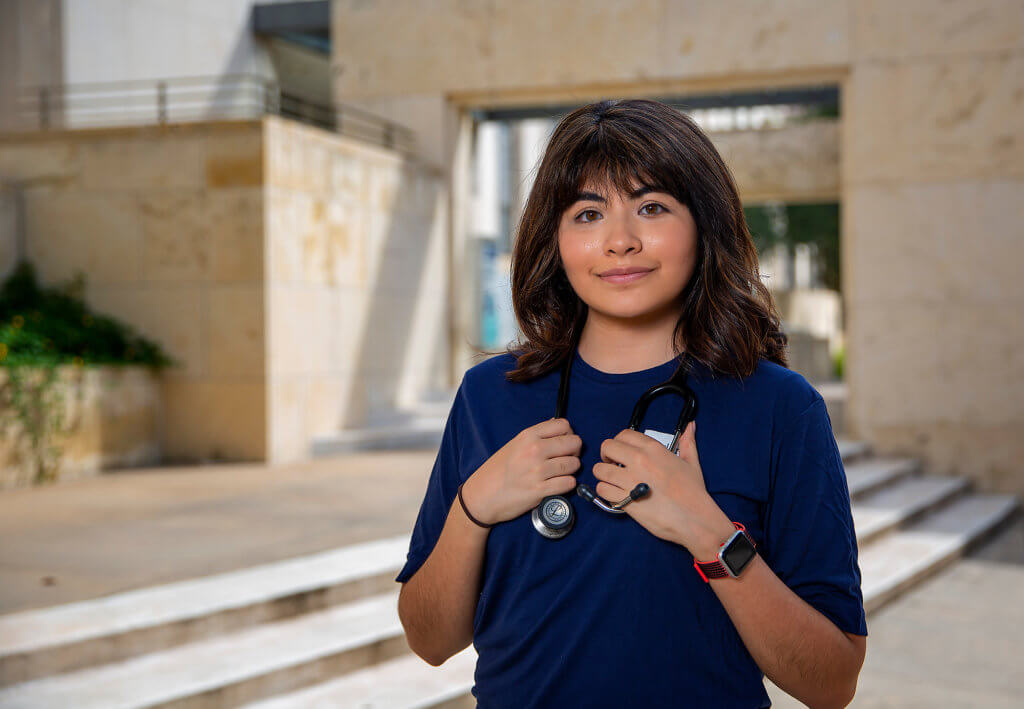Food for thought: Medical schools lack adequate nutrition education

“An apple a day keeps the doctor away” is the adage that portrays how a nutritious diet helps prevent illness. Physicians are on the frontlines of wellness—advising their patients to eat fruits and vegetables as part of a healthy and active lifestyle to ward off obesity and related chronic conditions such as diabetes, cardiovascular disease and certain cancers.
But a recent study published in The Lancet Planetary Health shows new evidence that doctors-in-training lack the proper nutrition education during medical school to advise patients during their careers.
“Despite the centrality of nutrition to healthy lifestyle, medical students are not supported to provide high-quality, effective nutrition care,” the study authors wrote.
More emphasis in medical education could translate to better outcomes for patients, said Laura Moore, RD, director of the Nourish Program at The University of Texas Health Science Center at Houston (UTHealth) School of Public Health, which offers a 24-week culinary medicine course to medical, dentistry, nursing and physician assistant students.
“It’s unfortunate that nutrition education isn’t intertwined throughout medical curricula,” she said. “Students really have that role of providing nutrition education and care to patients. They need to be able to do that in order to offer preventative care, so it’s integral.”
Currently, the Liaison Committee on Medical Education, the accrediting organization for U.S. medical schools offering the M.D., recommends no less than 25 hours of nutrition education across the 4-year medical school curriculum. However, many schools fall short. Students from medical schools across the country—as well as internationally—reported feeling “unprepared to counsel in nutrition” and as having “insufficient nutrition knowledge and skills to effectively support dietary behavior change in their patients,” according to the recent study.
The latest data by the National Health and Nutrition Examination Survey showed that the national obesity rate was just shy of 40 percent. The prevalence of obesity among adults increased from 30.5 percent between 1999 and 2000 to 39.8 percent between 2015 and 2016.
Many experts, including Moore, believe nutrition education taught throughout the curriculum will better prepare medical students to help their patients prevent and manage chronic diseases linked to poor nutrition and obesity.
“When the curriculum was developed, we weren’t looking at the high rates of obesity and chronic diseases,” Moore said. “We’re building a new foundation of new physicians—physicians who will know how to talk to their patients about their diet. They will be on the forefront of preventative care and nutrition. We have to build this new foundation because what we have is not working.”
However, bridging the knowledge gap in medical school is easier said than done.
“There’s always competition for space in the curriculum,” said Jerry Clay Goodman, M.D., associate dean of undergraduate medical education at Baylor College of Medicine. “There are a lot of important topics that we have to cover. There’s both the growth in scientific knowledge and there’s growth in knowledge of nutrition.”
Goodman estimated that students at Baylor spend approximately 80 hours in lectures and sessions on nutrition throughout the four years of medical school, which is much more than 10 or 15 years ago.
The time challenges remain when medical students graduate into clinical care. In an outpatient setting, physicians have 15 minutes—give or take—to talk with their patients and provide meaningful advice. With so many potential topics to cover from nutrition, to smoking cessation, exercise, health care systems need to take a more multidisciplinary, interprofessional, team-based approach to patient education by engaging registered dietitians and physical therapists, Goodman said.
Moore agreed that the solution will be found in collaborative efforts.
“[Physicians] will realize the importance of providing the resources that dietitians can provide and referrals to dietitians,” Moore said. “They can start the conversation, but the dietitians can certainly provide additional information.”




